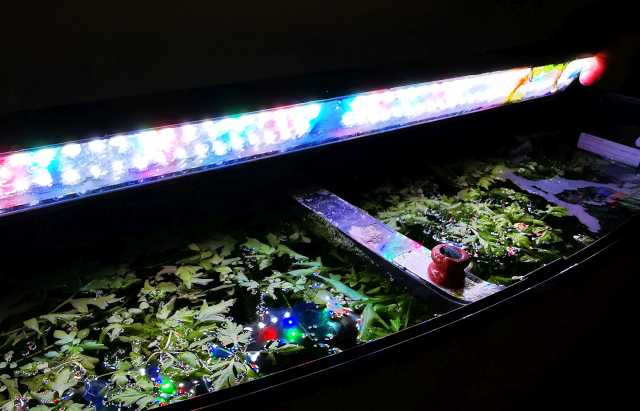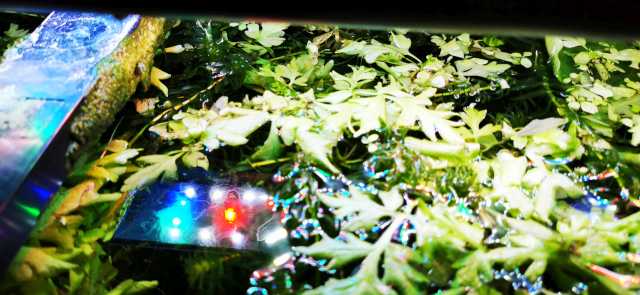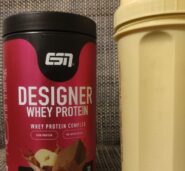
LED aquarium lighting - new light for new life
Yellow, blue, purple, red, pink alternating. Save electricity and generally, LED lives longer. Many aquarists would like to choose LED but anyone who is considering it, perhaps for the first time, may soon frown. Watt? Lumens? Lux? What lighting do you need for an aquarium like this? Isn't LED too artificial? What do the fish and the plants say about this? For this reason, we have written a guide that lists exactly what to look for in the 2024 bestseller: The best and most popular in the top 10 comparison | Honest tests and care should be taken when installing LED aquarium lighting. We have examined the technical side, listed the advantages and disadvantages and provide tips and advice on calculating the appropriate performance levels. – Led aquarium lighting bestseller 2024: The best and most popular in the top 10 comparison | Honest tests
Recommended reading: You will find many guides on various topics in the advice section !
Led aquarium lighting bestsellers 2024: The best and most popular in the top 10 comparison | Honest tests – in comparison
Watt is LED at all?
LED is an abbreviation and stands for light emitting diode. LED consists of a plastic lens, under which there is an anode, a cathode, an LED chip, a reflector pan and a gold wire. Different chips and also models now make it possible to shine in different colors and in different brightness levels. The tiny built-in technology makes it possible. The energy used for this is minimal in contrast to an ancient incandescent lamp, the price is a bit more expensive, but the LEDs last longer. Through the lens, the light is scattered, it means that it looks like more than it actually is.
???? Who is interested in the whole LED technology: Guide LED bulbs
Difference to natural lighting
LEDs are always artificial and work only thanks to the technology. This means that the color temperatures and brightness of a natural lighting must be adjusted. Until recently, that was halogen lighting THE lighting when it comes to aquariums. Now more and more is being converted to LED. LED is calculated differently. The most important thing is the specification of the lumens, because Lumen describes how much light, ie the flow of light. Lux is the strength of light. Kelvin the color temperature. Ergo: If you want to create a natural habitat for your aquatic inhabitants (plants and fish), you can stick well to Mother Nature. That would mean:
midday sun has a magnitude of 100.000 Lux and a color temperature of 5500 - 6500 ° K (Kelvin)
Sunrise and sunset start or end at 10 Lux and the temperature is around the 3200 ° K
Full moon however, it still brings to 0,25 Lux at 4000 ° K
✑ But: LED never replaces natural lighting because the color spectra are similar but not the same. The natural moon phases and the weather could still be included. Some manufacturers even go into that, further down.
energy savings
The LED power saving is clear. The LED buy or retrofit is initially more expensive, too. If you want to equip your whole house with it, you have to dig deeper into your pocket. Anyone who dares to take that step will be rewarded later with the savings. LED technology lasts longer, the usual Aquarium lights about 9 years. They do not have to be replaced like the older lights round about every 12 months.

What should you look for in the bestseller 2024: The best and most popular in the top 10 comparison | Pay attention to honest tests?
High-quality technology pays off. Inferiorly processed LEDs often have the problem that they "flicker". Sensitive people can get a headache from it. This may not be good for the aquarium lighting. Meaning: a stable technique is important. Note also the size of the aquarium. How high / long / wide it is. How many plants you have housed in them and, above all, which ones. The plants sometimes have very different demands on the light. Unlike the fish and crabs and the other animals. Too much light can stress and damage it. Thought of the technology? The times of the manual timerswho brutally turn the lights on and off are over. Natural regulation is possible. Built-in dimmers that adjust to the time of day and mimic the sunlight are included in almost every set. As features there is moonlight, so a night mode and also "cloudy sky". Interesting, right? So basically, you should focus on the following things:
- how big is the aquarium?
- How much light do the plants need?
- and the inhabitants?
- is there a dimmer?
- or other ways to regulate the light?
- is everything easy to clean?
- does the lighting match the existing aquarium?
What should you pay attention to when installing?
A pair of Aquarium is always an externally existing habitat, which must be adapted to the residents, so that they are all alive and well and feel well. Of course, this includes the right ph value Temperature of the water, good oxygenation by plants and Pump, enough space and of course a good and adequate lighting. Here are the key points to consider when lighting:
✔ a high quality LED technology
✔ enough light
✔ not too much light
✔ Timer for day and night lighting
✔ the lighting must be securely installed
✔ and adapted for the pelvis
✔ different ways of lighting for different natural cycles?
✔ Black taillights on the LED soften the light slightly if the pool is too brightly lit.
✔ Reflectors, however, can be mounted so that the light is amplified and distributed
✪ Note: a normal LED light, which is used in the house, is not possible. The reason is the mixture of light. Aquarium lighting mixes red and blue. Everyday lighting for people mixes blue and yellow. The proportion of red is usually completely absent. Red, however, the plants need for healthy growth and therefore also for the important photosynthesis.
Recommended reading: You will find many guides on various topics in the advice section !
Technology that excites
With changing colors and a dimmer, which is connected to a timer, it is no longer done. The customer wants more. The manufacturers have answered. What is possible today?
moon phases
Nature never has the same light. The cycles are bound to the weather, temperature and also the light. Thus, every night different light levels prevail. Starting from the new moon, the light becomes stronger, until the full moon and then decreases again. You can also get the natural spectacle in the aquarium. Some experts are very supportive of this, offering fish and plants even more natural habitat. In fish, among other things, one has noticed an increased sexual behavior. The pelvis becomes more fertile. And nocturnal animals are happy and feel much better.
Sunrises and sunsets
Even the sun does not just turn on like that. The abruptly clicked light terrifies many fish and is by no means natural. For many residents that means stress. Here, the technology actually supports a peaceful awakening or the night's sleep. Slowly, the light, as at sunrise, is driven higher and darkened at the end of the day. Fish do not have eyelids and so it is much more comfortable for them. But not only the fish, but also the plants awake and start their photosynthesis.
The weather
Storms and tornadoes you will not want to get into the living room, but how about clouds? The technique manages to dim the light for a short time and thus to simulate passing clouds. Sounds very exciting and also varied, if one imagines, to be a fish. Thunderstorm phases can also be adjusted by some manufacturers. How your fish react to it? And how does that look to you when you sit in front of it and watch the drama?
Hints and Tips
Niemals Never expose your aquarium more than 12 hours of "daylight"
❂ For some fish and also for algae, a midday rest of two hours has proven itself
❂ Give your dwellers sufficient shelter in the form of caves or plant hiding places
❂ The location of the aquarium influences the required lighting inside the pool
❂ The different plants also have different requirements. Some need more than 2000 LUX, others need more 300 LUX in the ground area
❂ Basically, the amount of light is calculated by calculating 0,5 watts per 1 liter of water as a scale
Advantages and disadvantages
Benefits
➚ LED hardly gives off any heat
➚ LED is much more economical
➚ With technology, Mother Nature can copy better
➚ Fish and plants feel much better
➚ LED has a much longer life expectancy
Disadvantages
➘ initially slightly more expensive to buy
➘ more complicated to apply, you really have to deal with it properly
Um a conversion can be expensive
Conclusion
A pair of lit christmas village no one needs in the aquarium, a natural habitat. The fish and plants are naturally better off under natural circumstances and that is exactly what the manufacturers of LED technology are aiming for. It's good. Technology will never be able to replace mother nature, but she manages to get closer to it. With a little bit of mind and if you take a few things into account, you can give your aquarium inhabitants a wonderful home. Including moon phases, sunrises and sunsets, clouds and night light. In addition, LED is more economical. If that's no reason to change and let this hobby shine in a new light in the living room!
Discover the top 10 best and best-selling LED aquarium lighting products 2024 on honest tests. We show a selection of the most popular items that have great customer reviews and value for money. Find the perfect LED aquarium lighting product for your needs now!
| # | Preview | Products | Rating | Price | |
|---|---|---|---|---|---|
| 1 |
|
VARMHUS LED aquarium lighting, aquarium light with APP control...* |
21,99 € |
Watch now! | |
| 2 |
|
FEDOUR Full Spectrum LED Aquarium Light: 40-60cm Classic...* |
17,97 € |
Watch now! | |
| 3 |
|
GERUI Aquarium Lighting X3 Aquarium LED Lamp Aquarium Light...* |
9,99 € |
Watch now! | |
| 4 |
|
BELLALICHT aquarium LED lighting, full spectrum top light...* |
20,99 € |
Watch now! | |
| 5 |
|
NICREW LED aquarium lighting lamp clip, ultra-thin ... * |
15,99 € |
Watch now! | |
| 6 |
|
hygger aquarium lighting, aquarium LED...* |
38,99 €
33,14 € |
Watch now! | |
| 7 |
|
NICREW Aquarium LED lighting, IP 68 waterproof aquarium lamp...* |
17,99 €
16,99 € |
Watch now! | |
| 8 |
|
Nobleza - LED aquarium lighting, aquarium lamp...* |
12,99 € |
Watch now! | |
| 9 |
|
SENZEAL X7 LED Aquarium Lighting Twins Aquarium Lamp Two...* |
15,99 € |
Watch now! | |
| 10 |
|
NICREW SlimLED White+Blue aquarium lighting, intensity...* |
29,99 €
25,99 € |
Watch now! |
Reading tips: coole DIY Projects | Fitness | You like product testing read?
- Test: Russell Hobbs Express Airfry mini oven
- Test: Koenig ice cube machine KB20 | Ice cubes at the push of a button
- Tested: Chaga mushroom prepared as Chaga tea
- Time Cube Test: Time management cubes for your effective time management
- Soum antiperspirant | Test experience
- Sportstech RSX500 rowing machine review | 16 programs for the perfect back training

On Honest tests you can find some tests (including pool, Fitness, Home & garden) & Guides (including Smart Home, Beauty, Handcraft) who can help you further.

Tip: An Gift Idea or Birthday gifts should never be cheap products, don't give away anything that you wouldn't use yourself in terms of quality.
Lots of positives Buyer ratings are often a sign that people are satisfied with the LED aquarium lighting product.
Recommended reading: massage gun, Fitness Bike, product testing
Sources: https://www.cichlidenwelt.de/CWF4/index.php/Thread/45664-Erfahrungen-mit-LED-Beleuchtung/
* Product images & links | Source: Amazon PA API | Last update on 24.04.2024/XNUMX/XNUMX | * = Affiliate links | Prices quoted on this website may have changed. The actual price of a product can be found on the seller's website. Real-time updates are technically not possible. Prices including VAT plus shipping costs











